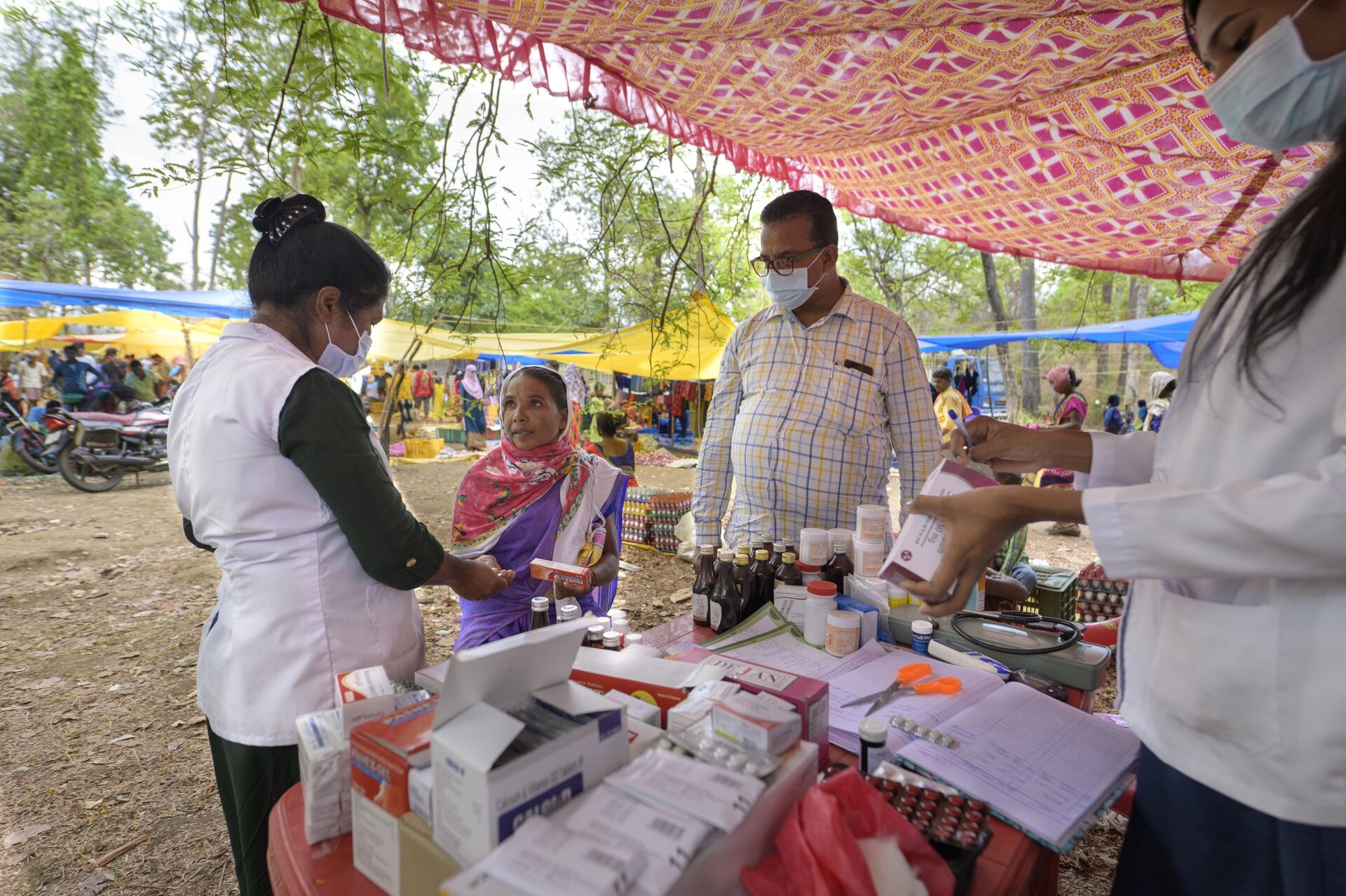อินเดีย: นำการดูแลสุขภาพเบื้องต้นมาสู่ประชากรห่างไกลในรัฐฉัตติสครห์
04/03/2024
Primary health care where people need it most
The weekly Haat Bazaars of Chhattisgarh are a traditional form of barter system for the local population. People walk long distances to sell their forest or agricultural produce, buy household supplies, and assemble to exchange news and information. The markets are fundamental for commerce and provide many opportunities for social and cultural exchange between different communities.
The Chhattisgarh State Government saw these markets as a great opportunity to bring PHC services closer to the people who need it most. In 2019, they launched the Mukhyamantri Haat Bazaar-Clinic Scheme. Today, hundreds of clinics operate in markets across Chhattisgarh, serving people who have never had access to healthcare before.
With support from the UHC Partnership, WHO has been involved at multiple stages of policy design and implementation for the scheme in coordination with the Government of India. WHO provide technical support in coordination with health authorities in three districts to roll out the clinics, analysed the impact of the work on service delivery, and fed back findings to improve the initiative’s design and implementation.
Over 3 years, more than 95 000 people have received health check-ups, and treatment where necessary. As of May 2022, a total of 1 888 clinics are in operation covering a population of 18 million people.
A range of health services free of charge
Medical teams who operate the clinics include doctors, community health officers or mid-level health workers, pharmacists, nurses, and drivers. The clinic provides maternal and newborn care, immunization, treatment for common illnesses such as fever, scabies, cold, cough, diarrhoea, malaria, anaemia, and screening for noncommunicable diseases such as diabetes, hypertension and cancers. When possible, patients can receive medications here or be referred to secondary or tertiary care.


